Bosch dishwasher symbols can be confusing and hard to understand, but they are essential to operating your dishwasher. If you lose your manual or can’t dig it out to look up the symbols and their meanings, you will be stuck using the same function for every load.
Knowing what the symbols mean lets you get the most out of your dishwasher. This is because Bosch dishwashers have various settings to ensure every load comes out sparkling clean. Some functions will protect your delicate glassware, while others will help you remove the stubborn grime from your pots.
This article will examine the different Bosch dishwasher symbols and their meaning.
Basic Bosch dishwasher symbols and tableware symbols
Dishwasher safe symbol

Overview: No standardized definition or symbol universally represents “dishwasher safe.” Although specific items require manual washing, the “dishwasher safe” symbol indicates that the object can be safely washed in a dishwasher. This symbol depends on the manufacturer’s recommendations and prior experience.
Best for: Making sure not to ruin dishware that shouldn’t be washed in a dishwasher.
Benefits/drawbacks: It is helpful to have a symbol that can guide you through the dishwashing process, however, since this isn’t a standardized symbol, it doesn’t help ultimately. It takes having washed items with this symbol previously and noting whether damage was done.
Dishwasher safe symbol
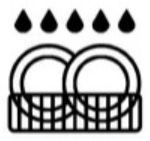
Overview: The typical representation of “dishwasher safe” is typically shown through a combination of plates or glasses in dishwasher baskets. There are several ways that this symbol is represented.
Best for: Separating dishes and cookware from the load when you don’t see this symbol or a similar one.
Benefits/Drawbacks: You’ll need to look through the manual to determine the types of dishes that you can wash when you don’t see the symbol.
Dishwasher proof symbol

Overview: A symbol with the number 500 or more with lines radiating from it represents “dishwasher proof”. The designation of an item as “dishwasher proof” is exclusively reserved for tableware and utensils that meet the certification criteria outlined in the European norm EN 12875. The numeric value assigned to an item in this category indicates the number of dishwasher cycles it can withstand without sustaining damage. The higher the number, the more durable and resilient the item is.
Best for: Premium quality kitchenware that can withstand the water’s high heat during the washing cycle.
Benefits/Drawbacks: This symbol can help remove some of the anxiety you might feel when you have expensive items that must be washed in the dishwasher. The downside is that it isn’t a standardized symbol on all high-end cookware and dishes.
Food safe symbol
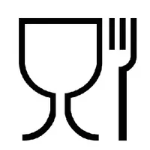
Overview: The image of a fork and wine glass is recognized worldwide as the symbol for food-safe materials. When you see this symbol on crockery, cutlery, or utensils, you can be assured that they will not contaminate your food with harmful substances. Generally, the symbol should be displayed on the material or packaging.
Best for: Anything that can be safely washed
Benefits/Drawbacks: You get peace of mind that the dishware will come out of the wash in the same condition as when you placed it in the appliance. The downside is that smaller items may not have this symbol, leading to confusion.
Bosch dishwasher care symbols
Rinse aid refill indicator
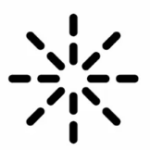
Overview: A symbol that looks similar to a snowflake represents rinse aid. Rinse aid is a helpful solution that ensures your dishes dry evenly and without streaks after the rinse cycle. Fill the designated container with a rinse aid, and your dishwasher will take care of the rest.
Best for: Items that are prone to streaking.
Benefits/Drawbacks: A pro tip to remember is that some dishwasher tabs already include a rinse aid. However, if you have hard water, you may need to add more rinse aid to achieve optimal results.
Dishwasher salt symbol
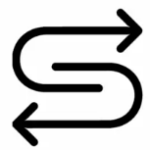
Overview: The dishwasher salt symbol is easily recognizable, like the letter “S” for salt. Once you see this symbol, you must fill the container, and your dishwasher will automatically add the right amount of salt during each rinse cycle. Using salt in your dishwasher is crucial to soften hard water and protect your dishes and dishwasher from limescale build-up. If you live in an area with hard water, your dishwasher may require more salt to ensure your plates are well cared for.
Best for: Keeping hard water at bay
Benefits/Drawbacks: It takes the guesswork out of knowing when to add salt or not. Pay attention to this symbol and act quickly, as doing so could result in limescale build-up, which may require you to descale your entire dishwasher.
Dishwasher tap symbol
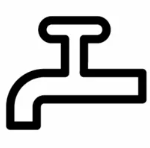
Overview: There could be several reasons to see the symbol of a water tap if your dishwasher is not receiving enough water. It could be a blockage, an incorrectly mounted hose, a turned-off tap, or an electronics-related problem.
If you notice that the dishwasher tap symbol is lit, there are a few steps you can take to resolve the issue. First, check the hoses and water connection to ensure they are not blocked or incorrectly installed. You can also consult your dishwasher manual for guidance on troubleshooting this issue.
Best for: Troubleshooting an error code.
Benefits/Drawbacks: This handy symbol can alert you to a problem. The downside is that it can’t tell you why there is a problem, so you will need to seek help from a professional who can identify and address the underlying cause of the problem.
Bosch dishwasher status indicators
Brush symbol

Overview: No need to worry if you notice a brush symbol on your Bosch dishwasher. This symbol indicates that your dishwasher is currently in the process of washing your dishes.
All you need to do is sit back and relax until the cycle is completed. Once the brush symbol disappears, you’ll know your dishes are clean and ready to be unloaded from the dishwasher.
Best for: Knowing when the machine is running.
Benefits/Drawbacks: This symbol will keep you from opening the dishwasher during a cycle, so you don’t have water spraying everywhere.
Pre-rinse symbol

Overview: When you see this symbol of dotted lines radiating toward a plate on your dishwasher, a short rinse cycle will occur before the full wash cycle begins. Using the pre-rinse cycle, you can ensure that your dishes are thoroughly cleaned and any tough food particles are removed before the full wash cycle begins. This can result in cleaner dishes and a more efficient cleaning process overall.
Best for: Dishes with dried-on food or sitting for an extended period.
Benefits/Drawbacks: The biggest benefit is that you save time by not needing to rewash dishes that don’t come clean after a wash.
Dishwasher drying symbol
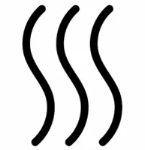
Overview: If you notice this symbol on your dishwasher, it simply means that your machine is drying your dishes as part of the regular wash cycle.
Once the drying process is complete, your dishes will be ready to be removed from the dishwasher, and you can put them away.
Best for: Avoiding plate ware and glasses that are still wet
Benefits/ Drawbacks: This is handy since you don’t have to worry about dishes and glasses being put away in the cupboard while still wet.
Child lock

Overview: With the child lock feature, represented by the graphic of a lock, you can prevent your dishwasher from being opened by small children. To disable it, you can use a specific button combination or press and hold a button for an extended period.
Best for: Households with children present.
Benefits/Drawbacks: The child lock can prevent a child from accessing the dishwasher while running or accidentally causing damage to the appliance. A downside is that if activated accidentally, the dishwasher will be prevented from functioning.
Connected Bosch dishwasher symbols
Home Connect symbol
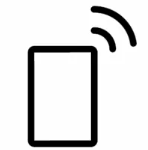
Overview: Representing the Home Connect function, you will see a rectangle shape like a phone with a couple of wifi bars radiating away from it. Your cookware, dishes, and glassware may require different dishwashing settings, such as higher temperatures or longer wash cycles. With the Bosch Home Connect app, you can quickly inform your dishwasher about the contents of the load from your phone, and it will automatically determine the optimal program to use.
Best for: Optimizing the wash for the type of dishes.
Benefits/Drawbacks: Your phone is always with you, so you can quickly launch your favourite programs from anywhere in your home. This means you can start your dishwasher without going to the appliance, making the process more convenient.
Favourite symbol

Overview: The star represents the Favourite setting. You can save your most frequently used dishwashing programs as favourites in the Bosch Home Connect app and launch them quickly, whether on the go or on the couch.
Best for: Specific functions for your exact dishes.
Benefits/Drawbacks: You can save a lot of time when you only need to press a button for your wash that needs specific instructions.
Bosch dishwasher programmes
Eco 50°

Overview: If you want to wash and dry your cups and glasses quickly, consider using the express program, aka 50° on your dishwasher. This program uses safe water temperatures for delicate glassware, reducing the risk of damage or breakage while providing an efficient and effective cleaning and drying cycle.
Best for: Premium glassware such as wine glasses.
Benefits/Drawbacks: The Eco 50° function can be gentler on dishes, resulting in less wear and tear. One downside is it may not be as effective at removing tough grime.
Auto 45° – 65°

Overview: If you’re looking for a great all-purpose dishwashing cycle, the Auto cycle is perfect for your everyday dishwashing needs. Not every load has to be customized, so using this function is easy and carefree.
Best for: A set-it-and-forget-it wash load that doesn’t require special care or instructions.
Benefits/Drawbacks: The Auto function is convenient because it eliminates the need to select a specific wash cycle. It may only be suitable for some types of dishes, however.
1h programme

Overview: With the 1-hour program, represented by a stopwatch and the 1h symbol inside of it, you can complete a full wash and dry cycle in 60 minutes. It’s a quick and efficient option when you need your dishes cleaned and dried quickly.
Best for: Quick cleaning needs.
Benefits/Drawbacks: This function makes quick work of a load of dishes, saving time and energy. The biggest drawback is it may not be as effective at cleaning heavily soiled dishes as other, longer cycles.
Express 45°

Overview: Express 45° represented by a stopwatch surrounded by a cup and a glass, can be used when you’re short on time but need your delicate glassware washed and dried. It uses a cooler water temperature that is gentle on your glasses and cups, and the program is designed to complete the wash and dry cycle quickly.
Best for: Fragile wine glasses, lightly soiled dishware.
Benefits/Drawbacks: With the express program, you can clean and dry glassware quickly. The downside is that the quick wash time won’t clean heavily soiled dishes.
Express 60°
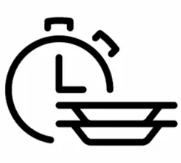
Overview: When you see a stopwatch with two plates in front of it, you’re looking at the Express 60° function. If you need your tableware cleaned quickly and efficiently, the Express 60° program is the perfect option. It is slightly hotter than the quick wash program for glasses, effectively removing dirt and grime from your dishes.
Best for: A quick cleaning option for soiled dishware.
Benefits/Drawbacks: The hotter temperature gives this function the benefit of cleaning more difficult grime than the other express functions. The downside is that you can’t wash certain delicate items due to the hot water.
Glass 40°

Overview: If you have delicate glass items, like high-quality crystal, the Glass 40° program on your dishwasher can help keep them clean and shiny. This program uses a lower temperature and a more extended drying period to provide a gentle yet thorough cleaning and drying cycle. The Glass 40° program is specially designed to protect your sensitive glassware while leaving it with a brilliant shine.
Best for: Glassware in general.
Benefits/Drawbacks: The benefits of using this function are that the glasses get cleaned while using less energy and water and come out dry to reduce spotting. The downside is that you may only be able to use it for some types of glass you have, particularly those with etching.
Intensive 70°
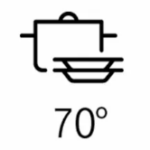
Overview: The intensive 70° setting is represented by a large pot behind two plates. If you have pots and pans with stubborn, burned, or dried-on food remains, the heavy-duty program on your dishwasher is the best function to use. This program uses high temperatures and increased spray pressure to provide a powerful cleaning cycle.
Best for: Cookware with baked-on food, grease, and grime.
Benefits/Drawbacks: The biggest upside to using this cycle is not having to scrub soiled pots and pans. The downside is that this setting can’t safely clean some types of pots and pans.
Machine Care
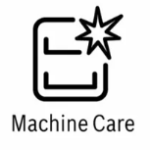
Overview: The machine care setting is represented by two racks within a rectangle and a sparkle. Like any other household appliance, your dishwasher needs regular care to perform at its best. When used with a machine cleaning detergent, this program provides a deep clean for your appliance, reducing the build-up of limescale, grease, and odours.
Best for: Keeping a dishwasher running smoothly.
Benefits/Drawbacks: No need to tolerate poor cleaning results when you are alerted to the fact that your dishwasher needs care.
Additional Bosch dishwasher options
SpeedPerfect

Overview: Combine your preferred program with the SpeedPerfect option on your dishwasher, represented by a stopwatch and the words Speed Perfect, to speed up your dishwashing cycle. This will shorten the cycle’s run time by up to 66% so that you can have clean dishes quickly.
Best for: Customized settings for a specific wash type that can be sped up.
Benefits/Drawbacks: You can get most of the benefits from a customized wash setting but save time and energy. This does not apply to pre-rinse or express programmes.
SpeedPerfect+

Overview: You can use the SpeedPerfect+ option on your dishwasher to shorten the run time of your preferred program by up to 66%. This means that you can have sparkling clean dishes in no time.
Best for: Lightly soiled dishware.
Benefits/Drawbacks: If you’re in a rush or want to save time, try using the SpeedPerfect option to speed up your dishwashing cycle. However, this does not apply to pre-rinse or express programmes.
Hygiene
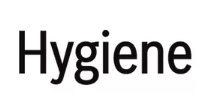
Overview: If you have small children or allergy sufferers, ensure your dishes are as clean and hygienic as possible by using the Hygiene function. During this cycle, temperatures of up to 70 °C ensure strong antibacterial performance. This helps to eliminate any bacteria or germs on your dishes, providing a safe and hygienic environment for your family.
Best for: Dishes that may have been contaminated.
Benefits/Drawbacks: You can ensure that no foodborne illness happens to you or your loved ones at home. However, a drawback is that the Hygiene option is unsuitable for sterilizing baby bottles.
Hygiene+
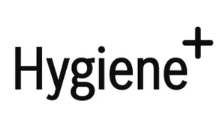
Overview: To ensure your dishes are extra clean and hygienic, consider using the Hygiene Plus function on your dishwasher. This function provides an extra-hot final rinse that delivers superior antibacterial performance, which is particularly useful for items like chopping boards or baby bottles.
Best for: Sterilizing baby bottles.
Benefits/Drawbacks: You can sterilize bottles and dishware with this setting but you won’t be able to add certain items to the load.
IntensiveZone

Overview: This function can be added to many programs, represented by two rows of spray, ensuring a higher spray pressure and increased temperature in the dishwasher’s lower basket. This is perfect for cleaning tough, baked-on food and grease.
Best for: Mixed loads that require different settings.
Benefits/Drawbacks: You don’t have to do two separate loads of dishes when you use this setting. Place more delicate items in the upper basket, making the IntensiveZone option incredibly versatile. However, the spray pressure and temperature may be too harsh for delicate dishes or items, such as crystals, and could cause damage or breakage.
Shine & Dry
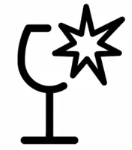
Overview: Look for the Shine& Dry function represented by a wine glass with a sparkle if you want to ensure that your dishes and glasses come out of the dishwasher clean and free of spots. This option adds more water during the rinse cycle and extends the drying phase, which helps to prevent watermarks and improve drying results.
Best for: Dishware that gets spotty easily such as stainless steel.
Benefits/Drawbacks: Using the ExtraDry option may result in a slight increase in energy consumption, and it’s recommended that you use a rinse aid to achieve the best results.
Extra Dry
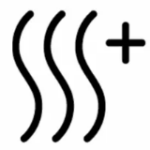
Overview: The Extra Dry feature, represented by three wavy lines and a plus sign, uses higher temperatures during the rinse cycle and extends the drying phase to ensure that your dishes are thoroughly dry. You can activate this feature with just one push of a button.
Best for: Plateware made from materials such as plastic or stoneware.
Benefits/Drawbacks: You can reduce the risk of mould in your cupboards when the plateware is dry after the wash. However, some types of plateware don’t need this setting to get totally dry which wastes energy.
Half Load
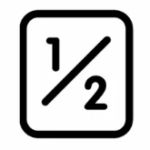
Overview: The half load setting is represented by a rectangle with the _ fraction sign inside. If you only have a few dishes to wash, such as glasses, cups, or plates, you can save water, energy, and time by using the “half load” setting on your dishwasher. This feature is perfect for when you don’t have a whole load of dishes, and it allows you to run a cycle with just the items you need to wash.
Best for: Not running a full cycle to wash small loads.
Benefits/Drawbacks: Using the half-load setting, you can conserve water and energy, which can help lower your utility bills.
Timer

Overview: You can choose when you want the cycle to finish with the delay start function on your dishwasher. You can set the delay for 3, 6, or 9 hours depending on your needs.
Best for: Timing your wash for the right time.
Benefits/Drawbacks: This feature is perfect for when you want to start a cycle later in the day or when you want to take advantage of off-peak energy rates. Unfortunately, you have to calculate when the load starts and it can’t be programmed for a specific time.
